All service-focused industries have started to embrace the subscription model for their business. It has proven convenient for customers and beneficial for the service provider. The subscription model business has proven to be highly effective in service industries and more and more businesses are shifting to this model of business. In the last 10 years, the revenue growth of subscription model businesses has been estimated to be five times more than the retail sector and S&P 500.
The stability for businesses and affordability for customers is a major factor that leads to this growth in the service subscription model. But we must also invest enough credit to the growth of technology that has boomed the growth of this model. Subscription management softwares have been added to the various ERP systems and this has favored the easier organization of subscription plans for industries.
From education to home improvement, businesses have now found a way to stabilize their revenue inflow by using the subscription model for their business. Subscriptions are not new. For a very long time, we've all subscribed to newspapers, milk delivery, and so on. But these were hyperlocal services and managing them was no complex deal. The scope of most industries is much larger than these small-scale services. To manage the thousands of users, and organizing their recurring bills is surely strenuous.
The solution was surely technological infrastructure that eased the process of billing, payment, and renewal of service. Most business management softwares and ERP allow integration with most payment services that increase the convenience of subscriptions.
The subscription model, especially in time of the pandemic has helped many industries like the fitness industry to advance their membership programs to online mode, turning homes into membership gyms. The stability of income that these models bring into the picture has helped many businesses to thrive in the changing climate.
The psychology of subscription plans works mostly in favor of retention than cancellation. With more insight into customer behavior and preferences, we can improve and modify products and services, leading to more customer retention. This ideally converts to more revenue. Apart from services, for goods, the subscription model is very ideal for customers who are unsure of a lifetime commitment.
The possibility of reducing commitment with anytime cancellation and other modifications to subscription plans have made it possible for customers to step into subscription plans without any second thoughts. Various other sectors like wellness industries, camping, and even the fashion industry have stepped into subscription models.
When it comes to entertainment, subscription modules allow access to variety. You have access to many genres, languages, and artists when you are subscribed to an entertainment service like Netflix or Spotify. The customization of the subscription plan allows the customer to choose the plans that fit right for their needs.
The technological backing that could deliver with good functionality and performance is inevitable to run the subscription model successfully. If you have not yet moved your business processes to an ERP solution, read about how to choose an ERP for your business and why.
Odoo is an ERP software that has various modules fully integrated with each other, with features and modules that can help you automate, control and manage your business in a more efficient and productive way.
In this blog, we will look at how service industries with subscription models can make the most of Odoo with the Subscriptions module.
For this blog, we will work with a cleaning service.
Odoo Subscriptions
In Odoo Subscriptions, we can create subscriptions as products. We can then sell the service to the consumers as subscription products. First, install the subscription module from the apps.
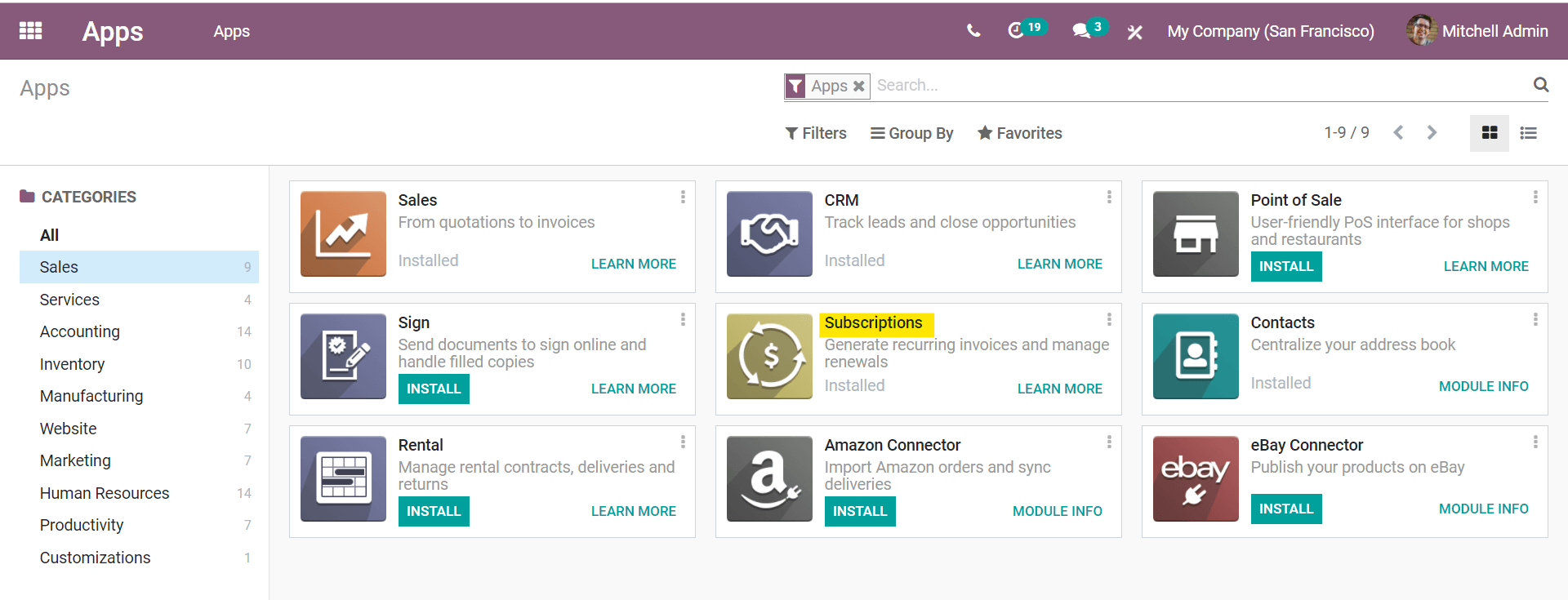
After the installation opens the module to create new subscriptions.
For working with Odoo Subscriptions, we must first create a subscription template and then create subscription products.
The subscription templates or subscription plans will determine the validity of the subscription. It can be biweekly, monthly, annual, and so on.
Create Subscription Template
The first step to configuring a subscription is to create templates. These are subscription plans we set to decide the recurring payment frequency. Some default templates offered by the Odoo Subscriptions are monthly and yearly subscriptions.
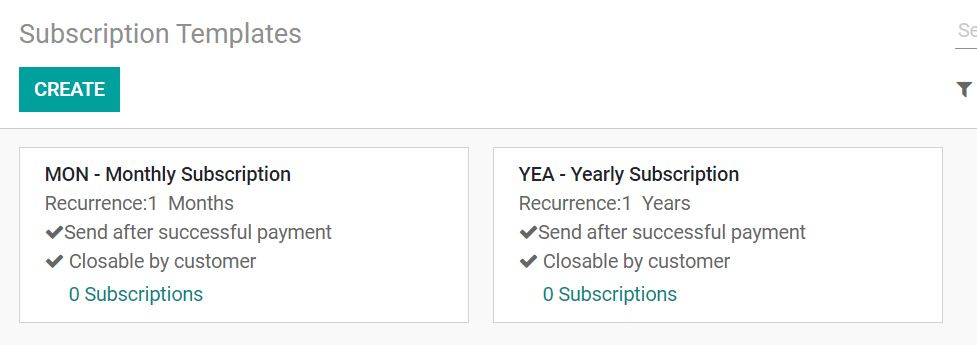
We can add more templates or edit the existing template from Configuration -> Subscriptions Template.
We can modify the invoicing period and set the duration of recurrent invoicing as forever or fixed for a given time period. Now say we are creating a weekly cleaning service for 20 services. The customer will be invoiced every week till 20 services are expired by setting the period as 20. We can also enable the customer to close the subscription. Once the fields have been filled, we can save the template.
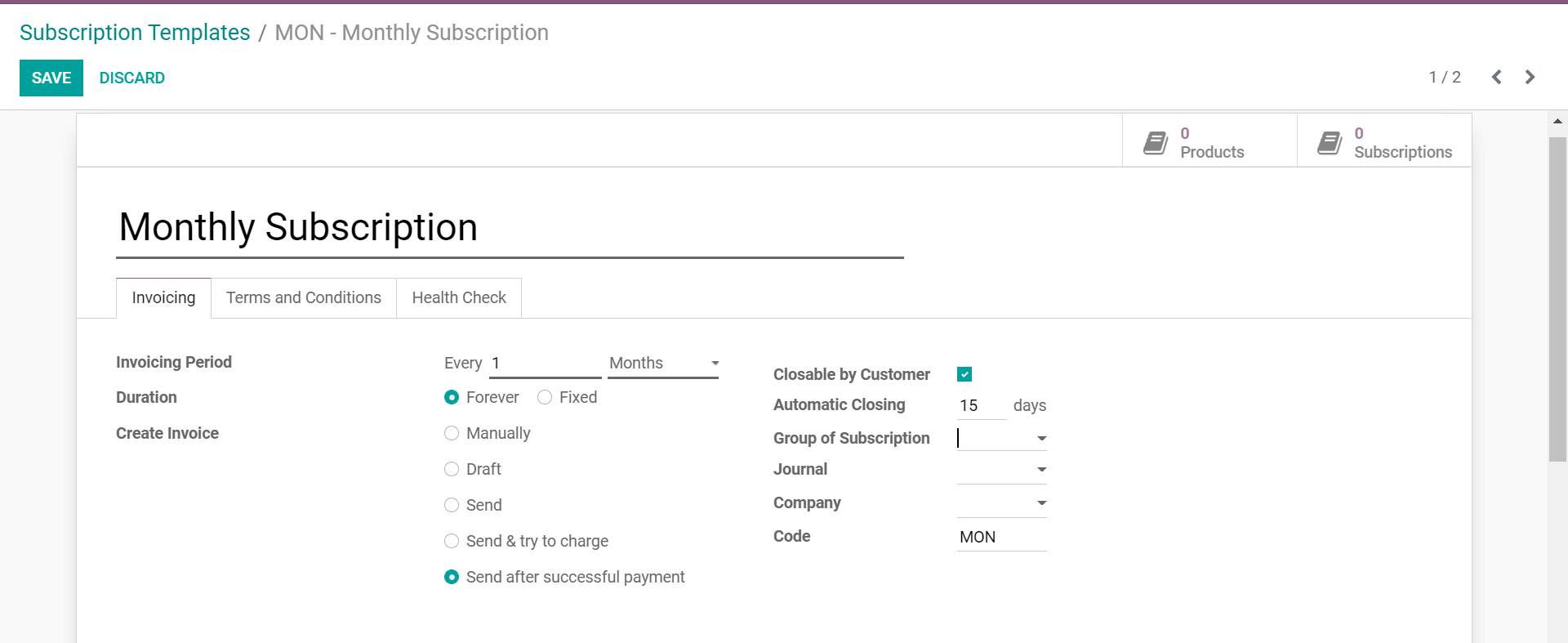
We can create terms and conditions for the subscription plan for clarity with regard to payment, refund, cancellation policy, etc.
In addition, there is a Health Check tab which will allow us to set filters to check which subscriptions under the template are in good health based on our filters.
Subscription Product
Once the templates have been configured we can create and add a subscription product to the module. Under subscriptions, we have the Subscription Products menu. Here we can create new products.

The products can be created and we must be attentive to choose product type as Service. Also ensure that we have deselected the can be purchased option while creating the product.

After doing so, we can move to the sales tab and enable the subscription product option. Choose the subscription template for the product.

This is the initial configuration for subscriptions.
Create Quotation
Once the products and template are configured we can create quotations for the subscription products from Odoo Sales.
Add a subscription product to the product list and create the quotation.
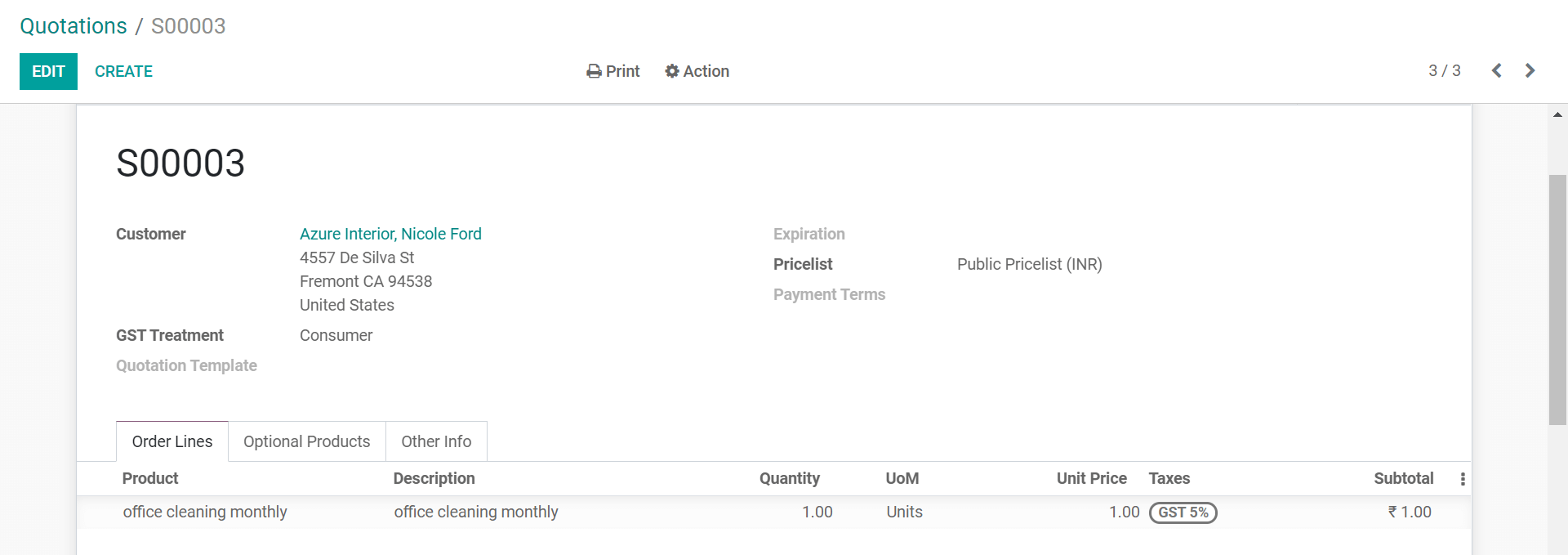
We can save the quotation and send it to the customer.
Quotation to Sales Order
Once the customer confirms the quotation, the quotation gets converted to a sales order. The subscription is then created and a new subscriptions tab will appear in the sales order. So we can control the subscriptions from the Sales module.

Managing Subscription
Once you open the subscription tab, we can view the details of the subscription created. We can upsell and close the subscription. We can also enable To Renew from the other info tab.
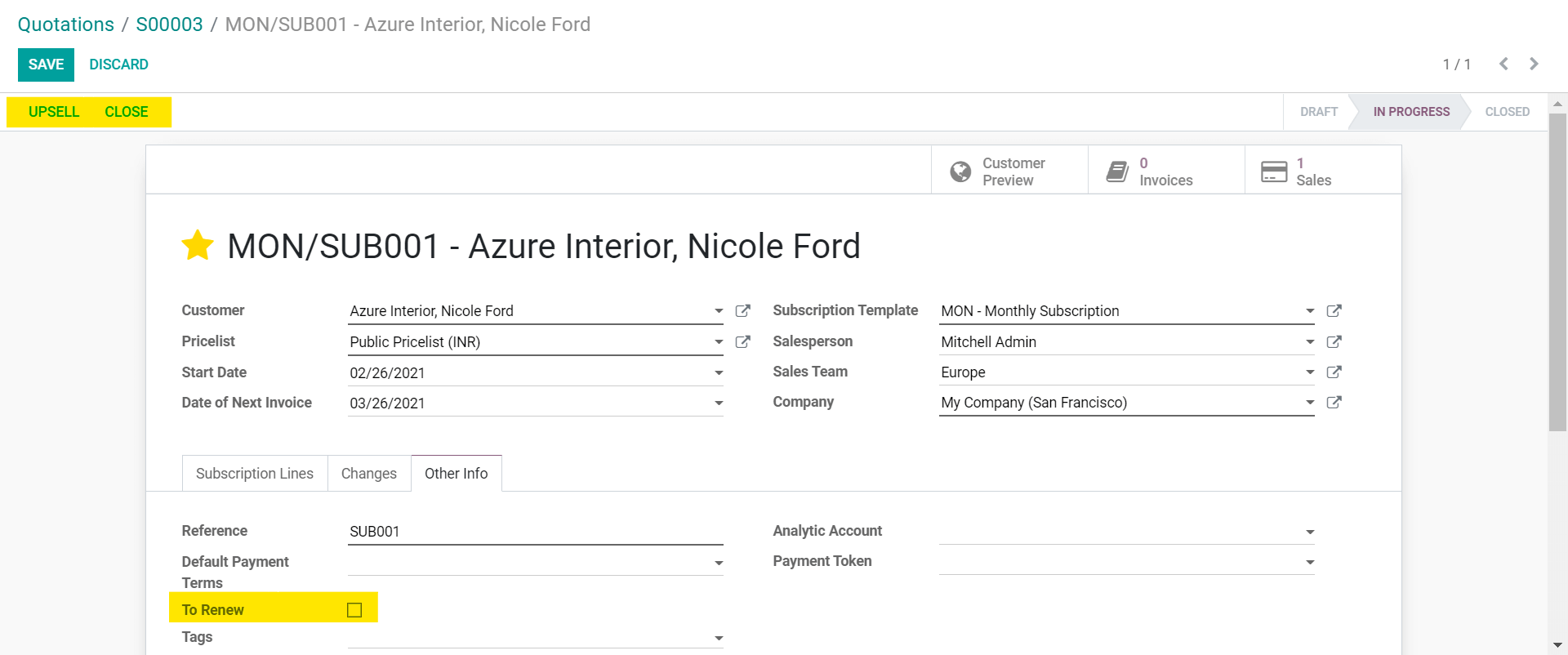
- Upsell subscription: We can add a new quotation with a new subscription product and then send it to the customer for approval. Read more about upselling subscriptions to have a better understanding.
- Renew subscription: We can renew the existing subscriptions at the end of duration and this will allow the customer to pursue the subscription.
- Close subscription: The subscriptions in Odoo can be closed by the customer or by us. While closing the subscription, we will be asked to mention a close reason. The same will also be prompted for the customer. We can configure the close reasons in Subscriptions -> Configuration -> Closing Reasons.
We can manage the various services and varying service plans effectively in Odoo. The subscriptions module helps you manage and control the subscriptions from creating plans to confirming sales orders and invoicing the services, all in one place. The module lets you manage your subscription sales like any other products sold.